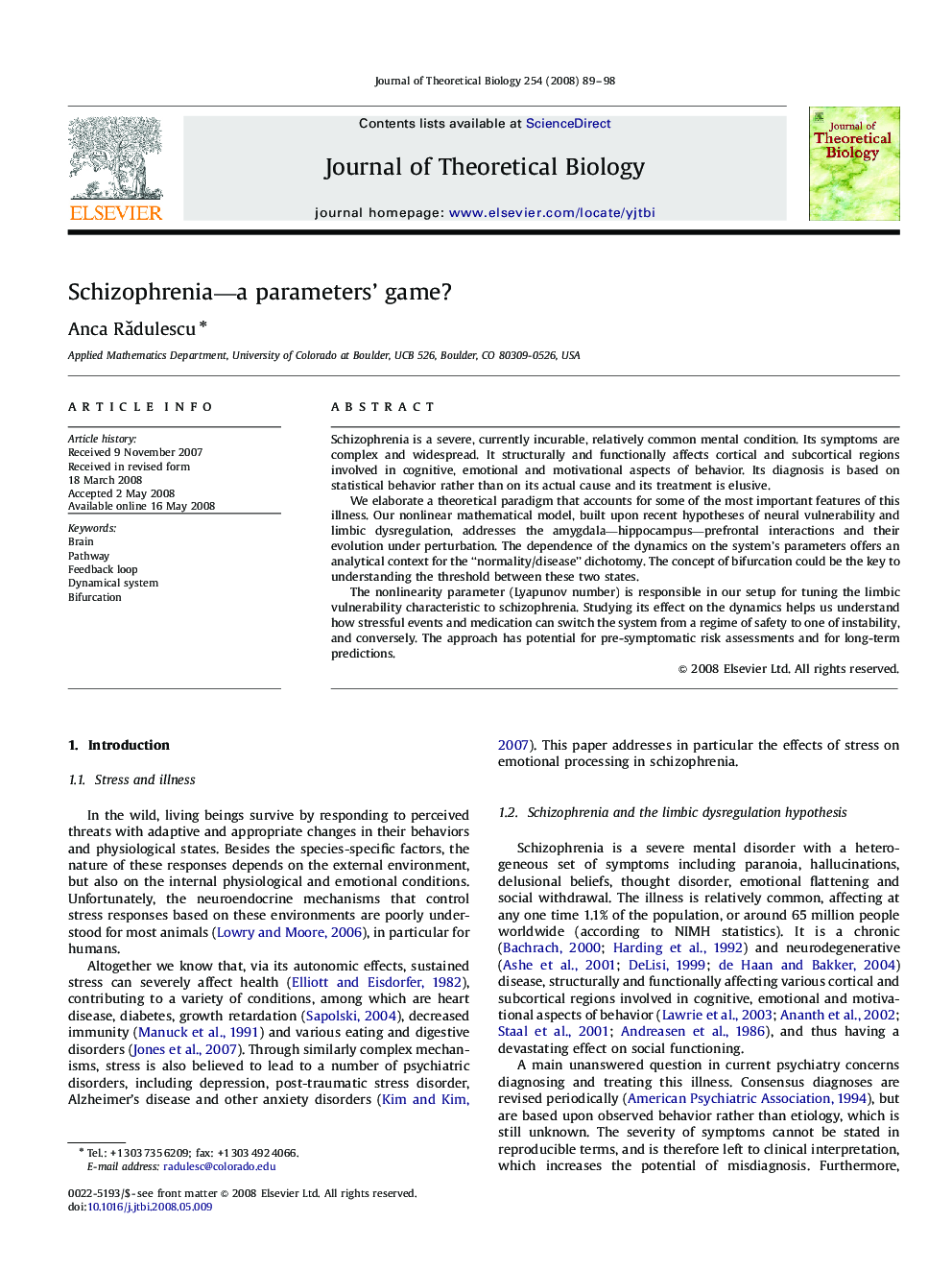| Article ID | Journal | Published Year | Pages | File Type |
|---|---|---|---|---|
| 4498677 | Journal of Theoretical Biology | 2008 | 10 Pages |
Schizophrenia is a severe, currently incurable, relatively common mental condition. Its symptoms are complex and widespread. It structurally and functionally affects cortical and subcortical regions involved in cognitive, emotional and motivational aspects of behavior. Its diagnosis is based on statistical behavior rather than on its actual cause and its treatment is elusive.We elaborate a theoretical paradigm that accounts for some of the most important features of this illness. Our nonlinear mathematical model, built upon recent hypotheses of neural vulnerability and limbic dysregulation, addresses the amygdala—hippocampus—prefrontal interactions and their evolution under perturbation. The dependence of the dynamics on the system's parameters offers an analytical context for the “normality/disease” dichotomy. The concept of bifurcation could be the key to understanding the threshold between these two states.The nonlinearity parameter (Lyapunov number) is responsible in our setup for tuning the limbic vulnerability characteristic to schizophrenia. Studying its effect on the dynamics helps us understand how stressful events and medication can switch the system from a regime of safety to one of instability, and conversely. The approach has potential for pre-symptomatic risk assessments and for long-term predictions.
